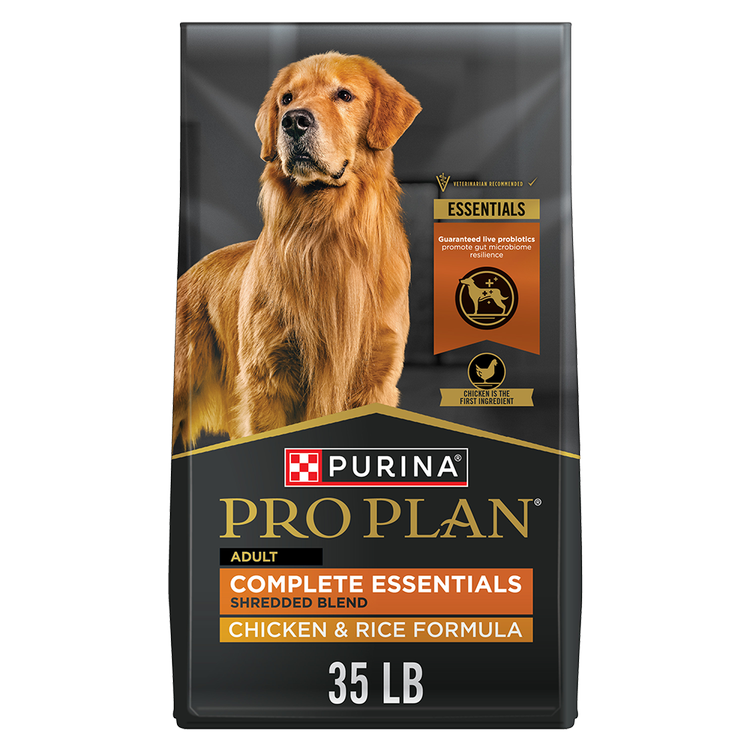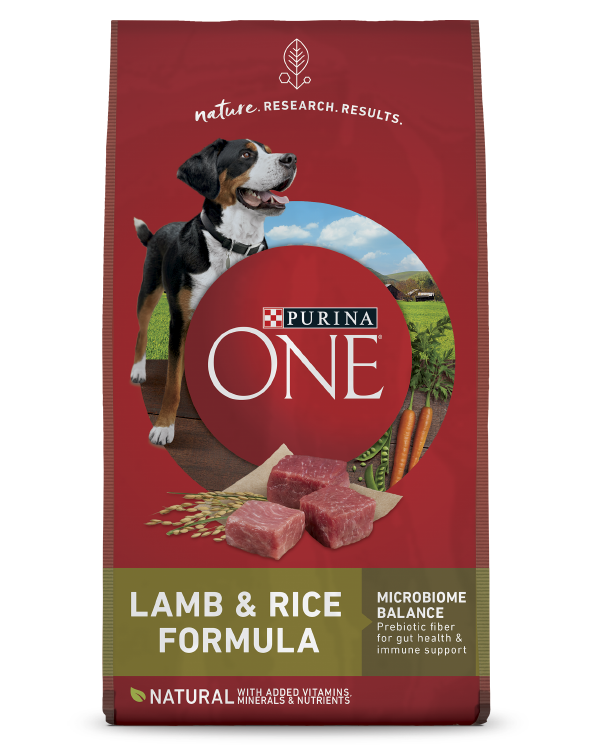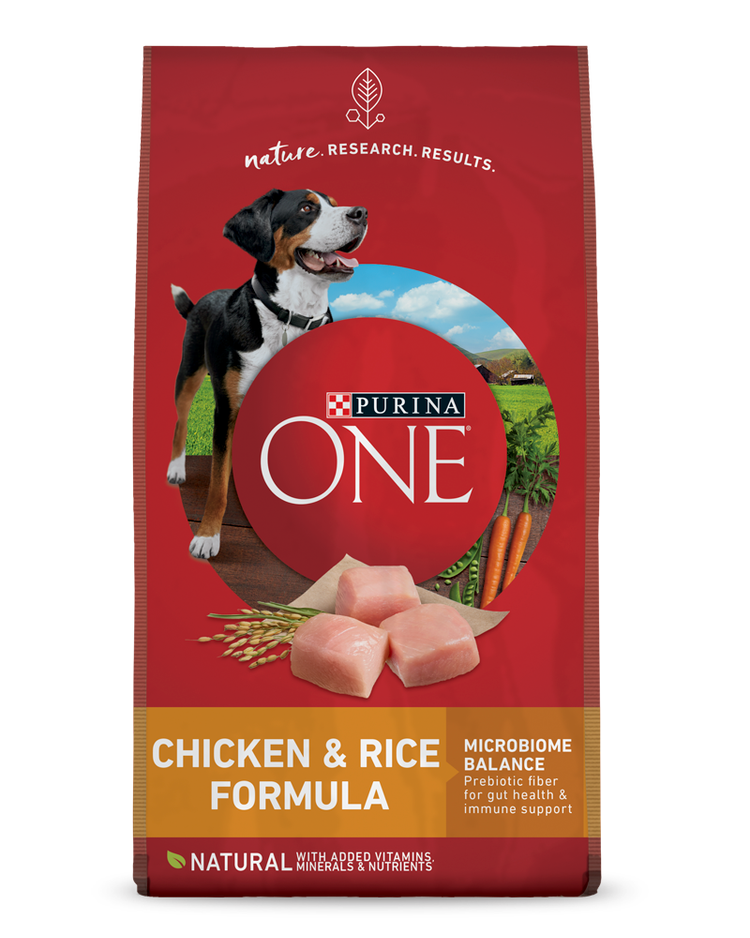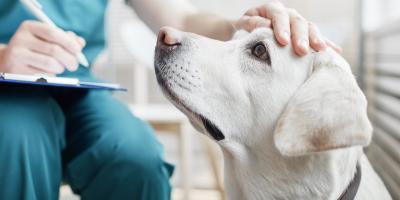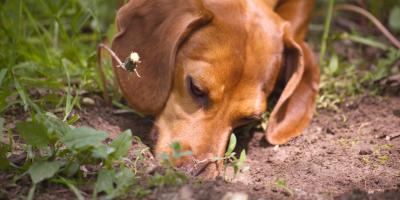Having puppies is both exciting and exhausting for you and your dog. While it’s wonderful to welcome adorable bundles of fur into the world, it can be hard work for a pregnant dog to grow, deliver and look after a new litter of adventurous puppies.
As for you, you’re probably asking, What should I feed my pregnant dog? It’s important to know pregnant and nursing dogs have very specific nutritional needs. Therefore, it’s more important than ever to understand the proper nutrition for pregnant dogs.
This will help to ensure they’re getting the right nutrients in their dog food. Eating a complete and balanced diet will help keep both the mother and their puppies happy and healthy.
Nutrition for Pregnant Dogs
Although adult-formula food is excellent for everyday use, pregnant dogs need an extra boost of nutrients, especially if they’re expecting a large litter. Moms-to-be can get the higher amount of energy, protein and all the additional vitamins and minerals they need from a high-quality puppy food. If you see “all life stages” on a label, that food is also appropriate for a pregnant/lactating dog.
Feeding pregnant dogs a puppy formula helps support your dog during and after pregnancy. Your dog’s body condition and other factors can affect your dog’s nutritional demands when expecting. The concentration of micronutrients in puppy food is important, as there’s less space for their stomachs with growing puppies crowding their abdomen. The pregnant mom needs more calories, but there’s less space to consume them, which may mean feeding smaller, more frequent meals.
Why Should I Feed My Pregnant Dog Puppy Food?
Puppy food for pregnant dogs is richer in key nutrients and provides more energy than adult-formula food. Plus, it’s easily digestible. These are important things to think about when feeding pregnant dogs.
Feeding your dog a puppy formula starting around week six of their pregnancy will help them stay strong and pass nutrients to their growing puppies and eventually into their milk.
You should introduce your dog to the new food in stages to allow their stomach time to adjust. Start to introduce the puppy food into the usual formula a little bit at a time over the course of about a week before making the complete change to puppy food.
Keep in mind your dog’s size and preference when choosing which puppy food to give them.
Per portion, dry food contains a higher number of calories than wet food. Therefore, if your dog is on a wet food only diet, feed them more meals or larger portions to ensure they’re getting the extra energy they need – especially if they’re a larger breed. You can also try combining their wet food with a bit of dry kibble to give your pet the best of both worlds.
As always, make sure your dog has easy access to plenty of fresh, clean drinking water so they can stay hydrated, especially if your pet is on a dry food formula during pregnancy.
How Much Should I Feed a Pregnant Dog?
When feeding pregnant dogs, give them their usual portion sizes for the first few weeks of pregnancy. During these early stages, your dog may go off their food or experience a little nausea and vomiting, similar to how humans go through “morning sickness.”
Though it may seem alarming, don’t worry – it’s perfectly normal. Contact your veterinarian if you’re concerned about your dog’s loss of appetite or if they continue to be sick.
Start to increase the food intake, bit by bit, from around week five of the pregnancy. Gradually increase the portion size a little more each week so that by week nine, the meal size is about a third more than usual. By this time, your dog’s weight should have increased by about 25 percent or more if they’re expecting a large litter.
Use controlled, measured portions to stop your pet from overeating and becoming obese, as this can cause problems during your dog’s pregnancy and labor. If you have any concerns about your pet’s weight during pregnancy, contact your veterinarian.
As the pregnancy progresses into the later weeks, feed smaller, more frequent meals, as a tummy full of puppies will mean your dog won’t have much room for food.
How Much Should I Feed a Dog During Nursing?
Nursing a newborn litter is hard work for a new mother, as puppies demand a lot of nutritious milk to help them grow big and strong. In fact, dogs actually produce more milk for their puppies than humans do for their babies.
To help your dog get the extra energy to nurse their new litter, keep feeding the puppy formula they had throughout the pregnancy. Its higher calorie content and added nutrients will give your dog strength and help the new mom produce high-quality milk for the puppies.
For the first one to three weeks of nursing, the mother should be eating three meals a day. By week four (when the milk production is at its peak), go up to four meals a day.
How much and how often you feed your dog during nursing will depend on your dog’s breed and the size of the litter. If your dog is nursing a litter of more than four puppies, they’ll need plenty of energy and may require constant access to food.
New moms will nurse their litter for around six to eight weeks, but the puppies can be slowly introduced to solid food from about three to four weeks old. As puppies wean off the milk, gradually reduce their mom’s food intake until they’re back to their pre-pregnancy level.
If you’re unsure about feeding during this vital time, talk to your veterinarian about what to feed your pregnant dog throughout all stages of pregnancy and nursing.
Feeding Basics
- The food you choose should have 1600 kcal metabolizable energy per pound of food and at least 22 percent protein, which you can find on the package label.
- Unless the pregnant or nursing dog tends to put on too much weight, give them all the food she wants.
- If they seem to be losing weight, try moistening the food to make it more appealing or switching to a more nutritionally dense food. Consult your veterinarian with specific questions and concerns.
- Always keep out plenty of fresh water in a clean bowl.
Adjustments During Pregnancy
- Dogs are typically pregnant for about nine weeks. For the first five weeks, food intake shouldn’t be much higher than usual.
- Between weeks six and seven, the pregnant dog’s weight will increase. At this time, give them 25 percent more food.
- In week nine, their appetite may slip or disappear. This is often a sign that the puppies will be born in the next day or two. Be sure to consult your veterinarian on what behaviors or events to expect and what signs might signal trouble.
Lactation
- After the puppies are born, expect your dog’s diet to steadily increase over the next three to four weeks as the puppies grow and nurse more.
- After the first month, the mother may be eating two to four times the amount of food they ate before pregnancy.
- Give the mother all the food they wants and encourage her by moistening the food.
- In the third or fourth week, the puppies will probably start nibbling at their dish, which is an excellent way to introduce them to solid food.
Weaning the Puppies
Between six and eight weeks, the puppies are typically weaned. Here are some steps to help stop milk production and make the transition as easy for the mother as possible.
- On weaning day, give a few pieces of kibble or a couple small treats, but do not feed full meals, only water. This is important in halting milk production.
- The next day, give them a quarter of her pre-pregnancy intake; the next day half; and the next, three quarters.
- By the fifth day, they should be back to her regular diet, although you may increase it for females that have lost weight during pregnancy until they regain their weight.
Discover more insights about puppies and dogs from our pet experts on our Pet Expertise page.
Related articles

Find Your Pet’s Perfect Food
Get your personalized recommendation with our Pet Food Finder tool.



